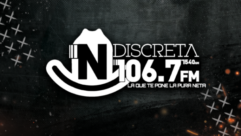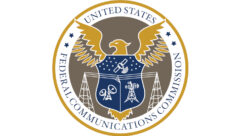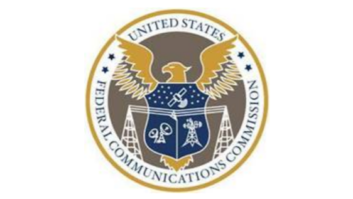FROM THE EDITOR
I’ve been seeking to build more and stronger relationships for Radio World with industry-leading broadcast organizations of all types. My goal is to assure that you have access to the broadest, deepest range of views, content and news about technology, infrastructure, regulation, history and the other subjects we love at RW.
One such is the North American Broadcasters Association; and my outreach coincided with an expanded focus at NABA recently on issues of interest to radio. So the relationship has been twice welcome.
— Paul McLane
The author is director general of NABA.
It has been a busy time for the North American Broadcasters Association, with two major projects dominating a full agenda of other issues and initiatives.
The first of these projects emanates from our Radio Committee’s Working Group on FM Chips in Smartphones. Chaired by David Layer from the National Association of Broadcasters, this Working Group has been developing strategies to encourage all North American mobile carriers to enable the already-embedded FM chip in smartphones. The working group is also encouraging handset manufacturers who have not yet embedded FM chips in their devices to do so as soon as possible.
From NABA’s perspective, these dual initiatives make perfect sense, both as a public service (as in times of emergency) and as a business opportunity, which an activated chip, alongside an app like NextRadio, provides for both the carrier and the broadcaster.
Additionally, this makes smartphones even more indispensable to the consumer. It’s like a modern-day Walkman on steroids with millions of chip-enabled phones becoming portable radios, but with all the added features of the digital age.

GET ON THE CHIP
In the process of this work, the NAB has undertaken market research in the U.S. on the penetration of chip-enabled smartphones.
The opportunity for NABA to partner with the NAB to get a better picture of the North American marketplace, by obtaining FM chip data from both Canada and Mexico, was just too good to pass up. We released our first results in September; they can be reviewed on our website at tinyurl.com/rw-naba.
The short summary of these results is that FM chip-enabled smartphone penetration in the U.S. and Canada is good, and in Mexico it is very good. This is an initiative that makes so much sense for all the stakeholders that we find it troubling that some mobile telephone manufacturers and carriers resist the idea.
NABA has just sent a submission to the International Telecommunication Union Radiocommunication Sector (ITU-R) asking Study Group 6 (Broadcasting Service) to give a new opinion concerning the activation of radio receivers in smartphones in the context of a recent ITU Report on disaster coverage and emergency broadcasting. Specifically, we are proposing the following:
“The opinion requests that associations of manufacturers of mobile telephones and tablets as well as service providers be contacted and encouraged to include and activate the radio functionality in their products along with the appropriate applications to facilitate broadcast reception.”
This submission is supported by our colleagues in the European Broadcasting Union, and we have shared the document with the World Broadcasting Unions. We are building support and momentum on a very solid foundation. You can see the ITU submission on our website at www.nabanet.com, click on ITU Submissions.
It is always dangerous to thank people, since you may miss someone; nonetheless, my thanks to the NAB’s Lynn Claudy and David Layer, Paul Brenner from Emmis Communications and Charles Einolf from CBS for their leadership and work on this project and submission. “Stay tuned” for updated research results in the months ahead.

NABA is tracking the penetration of FM chips in smartphones for the North American market, working with the National Association of Broadcasters and using sales data compiled by research and consulting firm ABI Research.HOSTILE LANDSCAPE
The second major project for NABA is on cyber security, both in broadcast IT and broadcast operations. NABA’s Risk Awareness & Continuity Committee formed a working group a few years ago to look at the issues, particularly in light of the Sony and TV5 Monde hacks.
Cyber attacks, including cyber crime, hacktivism, cyber espionage and cyber warfare, constitute an increasingly hostile threat landscape with millions of attacks per day. We need to address these growing threats doing damage to our systems and operations — in other words, mitigate and apply best practices.
A year ago, the Cyber Security Working Group issued a first document on what broadcasters require from vendors to secure their broadcast operations in the best possible way. Our U.K. partners, the Digital Production Partnership, adopted our requirements and added a few of their own, and at September’s IBC in Amsterdam, DPP Chair Helen Stevens (CTO, ITV) and I presented these requirements to broadcast suppliers at an event organized by Ericsson.
The requirements were well received and I think everyone understood that more work must be done, but at least a start has been made. The EBU now has a standing committee on cyber security, as does the Association of International Broadcasters. The issue is getting attention from the broadcast community around the world.
To that end, NABA is organizing what we think is the first Cyber Security Symposium for broadcasters, in New York City on Dec. 1, hosted by NBCUniversal. Here is a link to the draft agenda: http://bit.ly/2dFwiN8
The important point to remember about cyber-security issues is that the threat will only escalate in the coming years. The industry is moving to all-IP collection, production and distribution, even to their linear platforms. As this happens, our broadcast operations become more vulnerable to threat agents intent on making a serious breach, something that our IT colleagues have understood for years. We need to refine our procedures and practices, understand what we can do, and mitigate what we can’t do. This means refining our supplier requirements, increasing IT and IP training, and constantly sharing best practices.
The pace of change in technology in both radio and television is starting to reflect the pace of change reflected by Gordon Moore in 1965 when he coined Moore’s Law, which has generally come to be interpreted as computing power doubling every 18 months to two years. And that’s been going on for 50 years.
It’s an exaggeration to say the pace is that fast in radio and television, but there is no question that advances in such areas as high-speed computing, storage, virtualization, etc., are spurring technological change in how we make and distribute programs with better quality to multiple platforms which, even a few years ago, couldn’t have been envisaged to have come so far, so fast.
And we’re scrambling to keep up.












